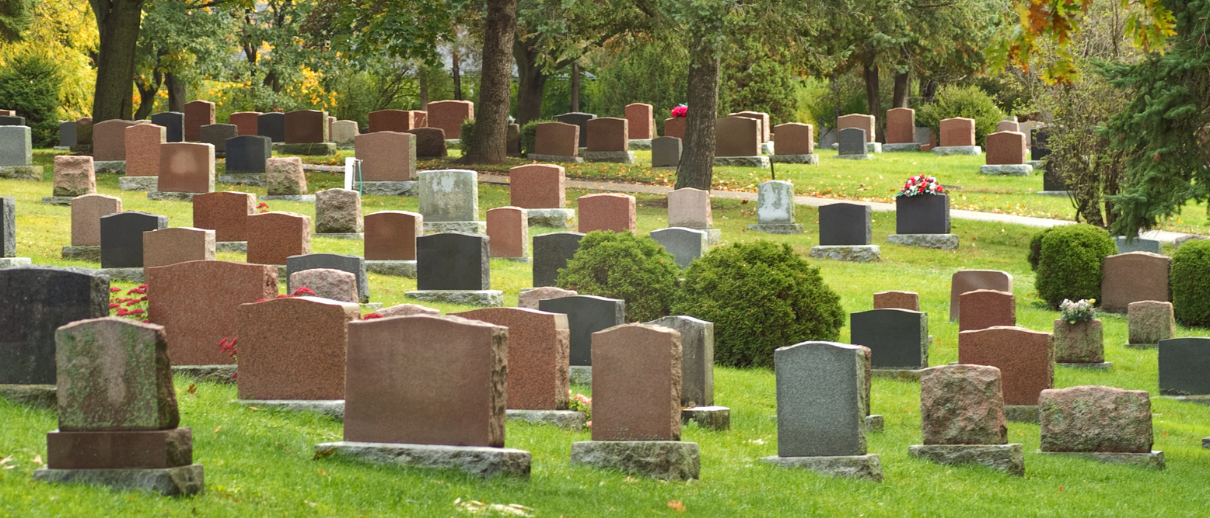#GraveTok Is Bringing People to Cemeteries For Much More than Memorializing
Cemeterians … bless your hearts. You already have to deal with so many issues that are totally unrelated to your duties to the dead, from wild animals roaming the grounds to criminals doing deals among the tombstones. While you welcome folks from your community to enjoy the beauty and peace of your sacred space, you might find that what they’re doing while they’re there isn’t quite, um, traditional. And you can thank TikTok for that — or more specifically, #GraveTok.
Snickerdoodles and scrub brushes
The #GraveTok hashtag first blew up on TikTok around 2021, and at the time, it was used to tag videos of people sharing stories and videos about celebrity graves, unusual memorials, or the process of cleaning or restoring headstones.
Caitlin Abrams, who has more than 2.7 million followers on her @ManicPixieMom channel, was one of the first #GraveTokkers. As she films the process of scraping and scrubbing the stones, she tells the story of the person buried there. The attraction, it seems, is three-fold; viewers love any kind of before and after visual, enjoy hearing the story of a person who lived 100+ years ago, and, for many, or at least for the ASMR enthusiasts, the sounds of scrubbing and running water produce a satisfying result.
Today, though, #GraveTok has become an umbrella term for basically any non-death-related activity that people film themselves doing in cemeteries. Last month Haley Hodge, an expectant mom and social media influencer, went viral for using names on gravestones as inspiration for her new baby’s name. (Spoiler alert: This month she announced that she’d chosen the name Salem, which she found on a veteran’s gravestone inscription in a North Carolina cemetery.)
The most recent #GraveTok obsession may be the strangest … and the most delicious. It involves: first, finding gravestones inscribed with the deceased’s favorite recipes; next, making the dish by following the recipe; and lastly, filming yourself eating said food at the aforementioned gravestone. Rosie Grant, aka @GhostlyArchive, has criss-crossed the country to create her content, making everything from Marion Montfort’s apricot ice cream to Annabell Gunderson’s snickerdoodle cookies.
What’s the harm?
Sharing heritage recipes, making stones shine, and showing appreciation for those who have gone before us are all harmless hobbies. Shouldn’t cemeterians relish the opportunity for their properties to be showcased in a viral video?
Well, there could be some unintended not-so-great consequences. Take grave cleaning, for example. The most popular #GraveTokkers use particular methods, tools, and chemicals to avoid doing irreparable damage when working with the oldest, dirtiest, and most fragile stones. But cemetery conservationists, environmentalists, and historians are extremely wary of what they call “amateur” gravestone cleaners, some of whom have ruined stones with their wire brushes and steel wool scrubbers. It’s similar to the damage some genealogy, history, and art enthusiasts have done by using chalk to make the text more legible; the chalk gets into the stone and, when mixed with rain, makes the stone break down from the inside.
Like any TikTok trend, there are hundreds of creators who have joined the #GraveTok community, but who knows what materials and methods they’re using or shortcuts they’re taking for sake of likes? Abrams and another #GraveTok influencer both “very clearly” shared with Buzzfeed that “this isn’t an activity you can just dive headfirst into. You need permission from a cemetery to clean headstones.” They also warned against bleach and power washers and recommended the US Department of Veteran Affairs’ guide on how to clean headstones as a primer.
This could be a good thing
Last August, the New York Times explored the growing #GraveTok trend, citing the influencers’ hope that they can “inspire a new generation of cemetery enthusiasts, or taphophiles, who can help conserve the country’s past” as cremation steadily increases. They also detail several surprising benefits of these videos, including the opportunity for descendants of the deceased to find their ancestors’ stories being appreciated by a whole new audience. Or, as TikTokker Grace Waronker adds, these families may think of these videos as a sign, or a “signal that that person is OK.”
Other creators are using #GraveTok to highlight the plights of Native American burial grounds and African-American cemeteries, both of which have historically and disproportionately been neglected, paved over, or forgotten. Raising awareness of the plights of these properties can indeed have a positive impact.
So what about those ladies who are lunching on the graves of deceased recipe makers? For the most part, they’re respecting and honoring the grave’s inhabitant just like any other visitor should be, and as long as they’re not leaving food, plates, or utensils for maintenance personnel to pick up, there should be no problem there.
If nothing else, the #GraveTokkers are bringing cemeteries to new audiences and hopefully dispelling some of the stigma and misconceptions that these properties are scary, depressing, or haunted. They’re also, in a way, bringing the inhabitants of these hallowed grounds back to life by sharing their stories, their recipes, and the places they once held in this world.




